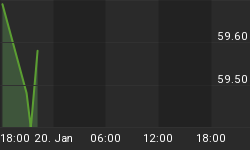As always, most of America's economic commentariat's favourite indicator is consumption. (Unfortunately it is even worse in Australia in that not a single media commentator grasps the dire shortcomings of the consumption approach). Their main argument is that consumer spending largely explains why the Clinton recession was so mild. Now comes the dangerous part: it has become the received wisdom that increased consumption more than offset the spending decline that occurred, for example, in equipping factories. This is dangerous nonsense.
Notice how these commentators focus is on consumption. These are people who believe that consumption spending makes up about 66 percent of total spending. It doesn't. The reality is that it could be about 35 per cent of total spending. The confusion comes about because GDP greatly understates total spending. (See Friederich von Hayek, The Paradox of Saving in Profits, Interest and Investment, Augustus M. Kelley Publishers, 1975). This is because spending on intermediate goods is omitted from the national accounts on the grounds that including them would mean double counting.
If an aggregate spending approach were employed instead of a value-added method the true situation would immediately become apparent. Looking at the deficiencies of the GDP accounting method directs me to the claim that consumption alleviated the effects of the recession, particularly regarding unemployment. The problem with this argument is that it denies the existence of a production structure. (Oddly enough, these same economists reverse themselves when it comes to the value-added approach). Once it is admitted that production consists of complex stages of production it becomes self-evident that business spending must exceed consumer spending. As one prominent member of the Austrian school put it:
[G]iven the difference between consumption goods and production goods (capital goods), it is apparent that a large part of a country's total production serves for the production of capital goods and not for the production of consumer goods, and that the production of capital goods must itself become a specialized branch of manufacturing. (Wilhelm Röpke Economics of a Free Society, Libertian Press Inc., 1994, first published in 1937).
Röpke's observation that capital spending exceeds by definition consumer spending is still largely ignored by an overwhelming number of economists who blindly insist that including the prices of intermediate capital goods in the national accounts would amount to double-counting. So what was initially a rather dubious accounting process quickly hardened into dogma.
It was Keynesian thinking that gave birth to GDP, the inventor of which was Simon Kuznets, despite Hayek's work on capital and production. Hayek noted that in 1928 Mr M. W. Holtrop had calculated that consumer spending in the US was about 8.3 per cent of what was spent on all producer goods, which also included intermediate goods. Hayek went on to explain the danger of overlooking the vital importance of spending on intermediate goods. (Prices and Production, Lecture II pp.32-68, Pub. Augustus M. Kelley 1967, first published in 1931).
Unfortunately Hayek's work had little or no impact of Keynesians. Nevertheless, there is goods news about. The US Bureau of Economic Analysis now produces another national income statistic called gross output. This statistic includes spending on intermediate goods. The December release for gross output for all industries was $22.857 trillion against a GDP of about $13 trillion. (Even this figure may have significantly underestimated business spending). It seems that some economists have finally realised how defective the GDP figure really is.
Relying on consumption spending to raise living standards is like arguing that the only way to avoid a famine is to eat more. We all know that famines are avoided by producing more food, not consuming it. Investing in factories, for example, is basically the same thing. It's not the consumption of cars, refrigerators, computers, etc., that raises living standards but the means to produce them.
Prices have work to do and part of that work is directing resources to where they are most valued. But if prices are distorted production will be misdirected. For the government to direct spending at the lower stages of production is to direct resources away from the higher stages. And these are the stages responsible for America's high living standards, which brings me to the Fed.
In 2001 the Fed cut the federal funds rate 11 times, I think, reducing the short-term rate to 1.75 percent, something that hasn't been seen in about 40 years. Moreover, if we adjust it for inflation it was zero in real terms. (No wonder consumer spending increased by an annual rate of 6 percent during the fourth quarter 2001). What was not understood -- and still isn't -- is that manipulating interest rates simply puts the US economy on a monetary roller-coaster.
A final note: consumption doesn't drive an economy, entrepreneurship does that while savings fuel it.















